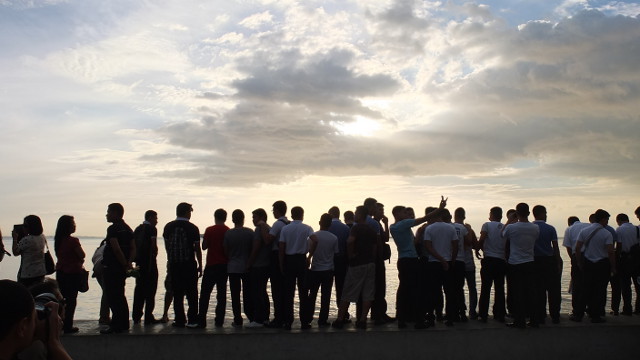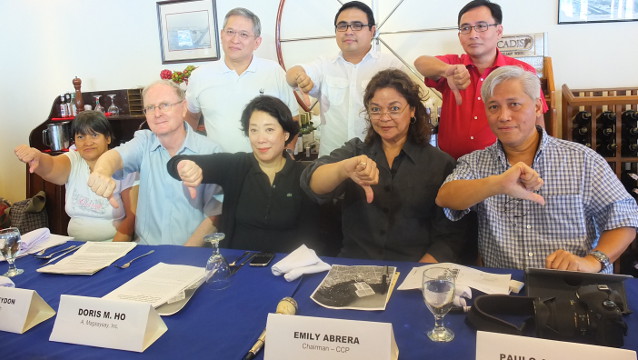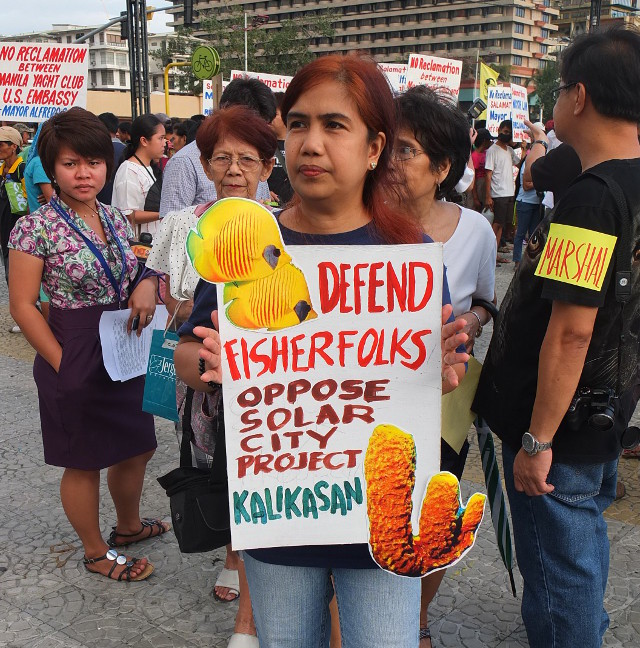SUMMARY
This is AI generated summarization, which may have errors. For context, always refer to the full article.
MANILA, Philippines – The Manila Bay reclamation is a complex issue involving many facets.
It touches on various issues that have earned their place in the hearts of thousands of Filipinos, from environmental impact to heritage conservation to economic growth.
Rappler zeroes in on the center of the topic and brings you a cheat sheet to help you navigate through this multifarious issue.
What is reclamation?
Land reclamation is the process of creating new land from oceans, riverbeds or lakes. Soil is transported from an area to a body of water. The soil is then used to create new land called “reclamation ground” or “land fill.”
What will be built on the reclamation ground?
A 148-hectare entertainment hub dubbed the “Solar city” will stand on the reclaimed land. This size is 10 times that of Rockwell Power Plant Mall and twice that of the Luneta Park, according to urban designer Paulo Alcazaren.
Who are the main parties involved?
The Manila Gold Coast Corporation is the developer contracted by the City Council of Manila under Mayor Alfredo Lim to reclaim the land.
They are the same developer that applied to reclaim the land in 1993. But because of fierce opposition from citizens against reclamation, Manila created a city ordinance banning all reclamation in Manila Bay from the US embassy to the Cultural Center of the Philippines (CCP). Gold Coast was stopped.
The S.O.S. Save Manila Bay Coalition is composed of various groups and individuals who oppose reclamation in the bay. Among these are the CCP, Worldwide Fund for Nature Philippines (WWF-PH), Urban Poor of the City of Manila, Heritage Conservation Society, Heritage Conservation Society Youth, the Parish of Malate and more.
The Pambansang Lakas ng Kilusang Mamamalakaya ng Pilipinas (Pamalakaya) and the multisectoral network Koalisyon Kontra Kumbersyon are also against the project.
The Philippine Reclamation Authority (PRA) is a branch of government tasked with evaluating and overseeing reclamation done anywhere in the Philippines. The Gold Coast application to reclaim must go through this office. The current PRA general manager is Peter Anthony Abaya.
The Environmental Management Bureau (EMB) under the Department of Environment and Natural Resources (DENR) is tasked with evaluating the Environmental Compliance Certificate or ECC of Gold Coast. If the EMB denies Gold Coast’s ECC application, Gold Coast cannot reclaim. The current EMB director is Atty Miguel Cuna.
What legislation has been crafted on the issue?
Proclamation 41 by President Ramon Magsaysay in 1954 reserved Manila Bay as a national park for the people.
Republic Act 7586 issued in 1992 under President Fidel Ramos included Manila Bay in the National Integrated Protected Areas System Act of 1992 even if some portions of the bay had already been reclaimed.
City Ordinance 7777 was passed by the City Council of Manila on Jan 13, 1993 banning any form of reclamation along Manila Bay from the US embassy to the Cultural Center of the Philippines. At that time, Alfredo Lim was mayor of Manila.
NCHP Resolution No. 19 S/ 2012 protected by RA 10066 and 10086 of the National Historical Commission declares the Manila Bay and its waterfront by Roxas Boulevard a “National Historical Landmark” protected by the National Cultural Heritage Act of 2009. This recognizes Manila Bay as “cultural property” and should be protected by the government. The act mandates that the bay “shall be maintained as close to their appearance at the time the area was of most importance to Philippine history as determined by the National Historical Institute.”
City Ordinance 8233, passed by the City Council of Manila on June 6, 2011, amended Ordinance 7777 thereby lifting the ban on reclamation. Once again, the mayor of Manila at the time was Lim.
Briefly, what are the reasons supporting reclamation?
In an official statement on Facebook, Gold Coast says the “Solar city” will stimulate economic growth and provide plenty of jobs. It will have “the first international cruise ship terminal that will bring tourists to the area.”
It also downplays fears that the “Solar city” will obstruct the famed sunset view because it will be located perpendicular to the waterfront (stretching from behind the Philippine Navy headquarters) and not parallel to it.
Briefly, what are the reasons for opposing the reclamation?
The various coalitions against it maintain that the project will exacerbate flooding in Manila.
The reclaimed land will block rainwater from escaping to the sea thereby trapping it within the city. Because the reclaimed land will be higher than the water, it will form a bowl that will keep flood waters in.
The coalitions say that the reclamation will ruin the historical Manila Bay waterfront. The previously uninterrupted horizon will be partially blocked by the “Solar city,” changing the bay forever.
They also cry foul that so many ordinances and national laws were bypassed for the project. The lack of public consultation and lack of transparency from Gold Coast also disturbs them.
For more details, read DOT Sec Jimenez: Entertainment city ‘not been taken up with me’ and The battle for Manila Bay: Citizens rise against reclamation.
What has been done?
Last February 12, concerned citizens formed a human chain along Manila Bay to protest against the reclamation. Over 3,000 people participated. Read about the event here.
An online petition is circulating to persuade authorities that citizens do not want reclamation or the “Solar city.” The aim of the petition is to persuade the City Council of Manila to once again ban reclamation projects in Manila Bay.
The S.O.S. Save Manila Bay Coalition has submitted a position paper to Atty Miguel Cuna of the Environmental Management Bureau under DENR. The paper aims to show EMB the negative environmental impact of the project in hopes that they will deny Gold Coast’s ECC application. Once denied this, Gold Coast cannot proceed with reclamation.
As of the moment, Gold Coast needs only a Notice to Proceed before beginning the project.
What can still be done?
The coalitions against reclamation call on more citizens and sectors to sign and distribute the petition. You can read and sign the petition here.
If you personally know the people involved with the reclamation project, engage them in discussion and ask them to respond to the many complaints against it.
Citizens should demand transparency from Gold Coast and the branches of government involved in the project. At this stage, citizens should be paying close attention to the movements of DENR regarding Gold Coast’s ECC.
In the coming mayoral elections, Manila residents can demand to know the positions of Manila mayoral candidates Joseph Ejercito Estrada and Alfredo Lim on reclamation in Manila Bay. – Rappler.com
Add a comment
How does this make you feel?



There are no comments yet. Add your comment to start the conversation.